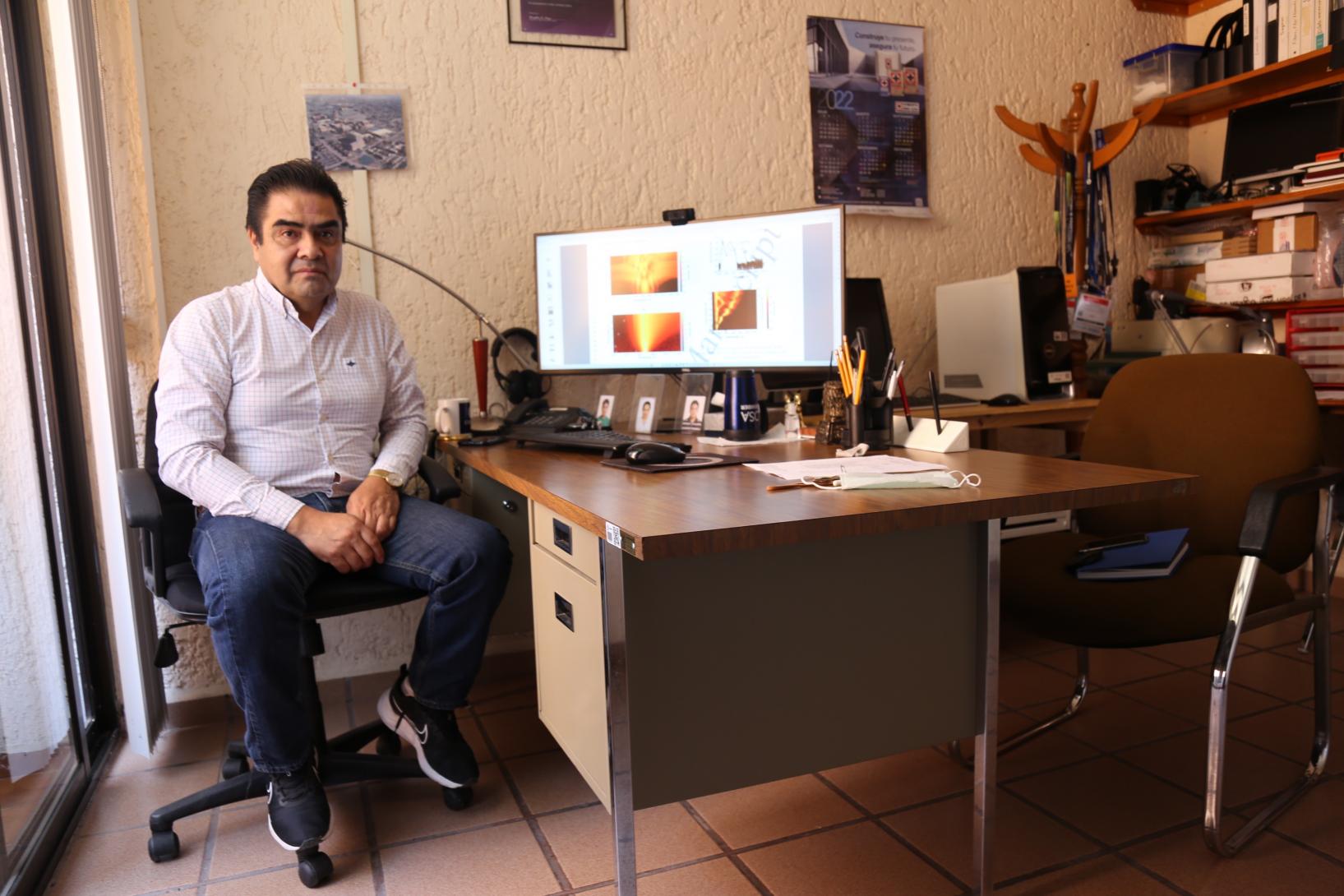Dr. Baldemar Ibarra, featured author with three articles in IOP Latin America
Santa María Tonantzintla, Puebla, March 24, 2023. The specialized magazine IOP Latin America has named Dr. Baldemar Ibarra Escamilla, researcher at the National Institute of Astrophysics, Optics and Electronics (INAOE), as one of the featured authors of the month of March for not one, but three of his investigative articles.
The articles are “Characterization of supercontinuum process pumped by amplified dissipative solitons”, “Polarization mapping of a dual-wavelength passively model-locked fiber ring laser” and “Multiple mode-locked regimens of an Er/Tb double-clad fiber laser based on NPR.” Two of the three works are based on experiments carried out at the INAOE Fiber Optic Laboratory.
In an interview, Dr. Baldemar Ibarra explains that the first article is based on purely experimental work, and that it reports a process for obtaining a supercontinuous signal with two different types of fiber using a pump of two different pulses, in this case of soliton molecules and noise pulses, that is, a light source that has a wide spectrum that can go from 200 nanometers (for a standard fiber) and more than 600 nanometers (for a highly nonlinear fiber).

“Within the electromagnetic spectrum is visible light, which is what our eyes can resolve and see. The typical example is the rainbow. When it is raining and it is sunny, the sunlight crosses the water droplets and then the wavelengths are divided and this is what makes the rainbow visible. Visible light ranges from a wavelength of 380 to 780 nanometers. But the electromagnetic spectrum is very wide. The light that we call supercontinuous can be generated with optical fibers and can range from a thousand nanometers or one micron to two thousand nanometers or more, that is, the wavelength is longer than that of visible light. This supercontinuous light is a source that can generate light from 200 to 600 nanometers. Normally laser light sources are a low bandwidth source, they are focused at a certain wavelength. If we talk about erbium fiber lasers, they can be generated in a bandwidth of one or two nanometers, that is, they are very specific light signals, like a pointer, which is a red light with a wavelength of 620 to 780 nanometers and a bandwidth of a few nanometers. In contrast, supercontinuous light has a much larger bandwidth. In this work we generate supercontinuous light, using two different fibers and through two different types of pulses”.
The second article is based on an experimental work in which a mapping adjusting the polarization and controlling some elements within our scheme is reported, as with said elements and depending on their adjustment, different pulse dynamics can be generated, such as soliton pulses, noise pulses etc. simply by adjusting certain elements of the experimental setup: “This allows us to get different dynamics and switch to different output pulses from our laser system. All this with erbium-doped fiber with which we can generate laser light in the neighborhood of 1550 nanometers”.
Finally, in the third project a different type of fiber was used: “In the two previous cases we used typical or standard erbium-doped fiber, but there is another type of fiber known as double-clad fiber. Standard fiber only has a cladding and light propagates within the core of the fiber. Double-clad fibers allow us to generate higher power light because the first coating allows us to introduce the pump light, which is much higher than if we introduced it into the core. By putting in more pump signal, we can generate more output signal, with more power. In this arrangement we work with different mode-locking regimes to generate laser pulses using erbium and ytterbium-doped double-clad fiber. For this particular case we consider a nonlinear effect known as nonlinear polarization rotation. With this we can have different soliton and noise pulse dynamics, so we can generate different types of output pulses in our laser system simply by adjusting different elements within our device. The difference with previous arrangements is that the output power is much higher due to the type of fiber we are using”.
For more information, see https://latinoamerica.ioppublishing.org/noticias/el-autor-destacado-dr-baldemar-ibarra-escamilla-del-instituto-nacional-de-astrofisica-optica-y-electronica-puebla- Mexico/
Luis Enrique Erro # 1, Tonantzintla, Puebla, México, Código Postal 72840, Tel: (222) 266.31.00, difusion@inaoep.mx
This work is licensed under a Creative Commons Attribution-NonCommercial-NoDerivs 2.5 Mexico License.


